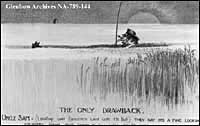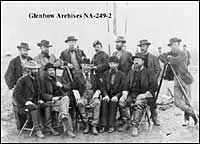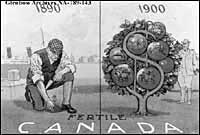 |
||||||
 |
||
Opening of the WestNot long after acquiring the Northwest Territories, the federal government began to fear that the largely unpopulated region would be difficult to manage from afar. One of the its biggest concerns was that if careful attention was not paid to the development of this new western region, it would fall into lawlessness and be infiltrated by Americans. Promoting settlement in the west then became an integral part of the Dominion’s "National Policy" – the hallmarks of which would be the growth of central Canadian industry, the settlement of the west, and the construction of a transcontinental railway that would, it was hoped, link together a vast nation. The expensive new railroad also required freight and traffic. |
|
|
|
The achievement of this vision required an aggressive immigration policy. In order to prepare the Northwest for settlement, the government sent surveying teams out west in 1871 to divide the land into townships and sections for farming. Once the Dominion Lands Act was passed in 1872, any male over the age of 21 was offered a homestead of 160 acres in the west upon the payments of a $10 registration fee. However, it was not until after the completion of the railway line to Alberta in 1885 and the suppressing of the Northwest Rebellion that any aggressive settlement began to occur in the west. Even so, the period between 1870-1896 remained one of slow growth, as most of those who came were settlers from Ontario and other regions in the east. Those who ventured out west tended also to settle around trading or police posts, and it was not until the completion of the Calgary and Edmonton railway in 1892 that this pattern began to change.
|
||
| [back] [The Great Migration] [Place Names] | ||
 |
updated 18-02-01 |
 |


